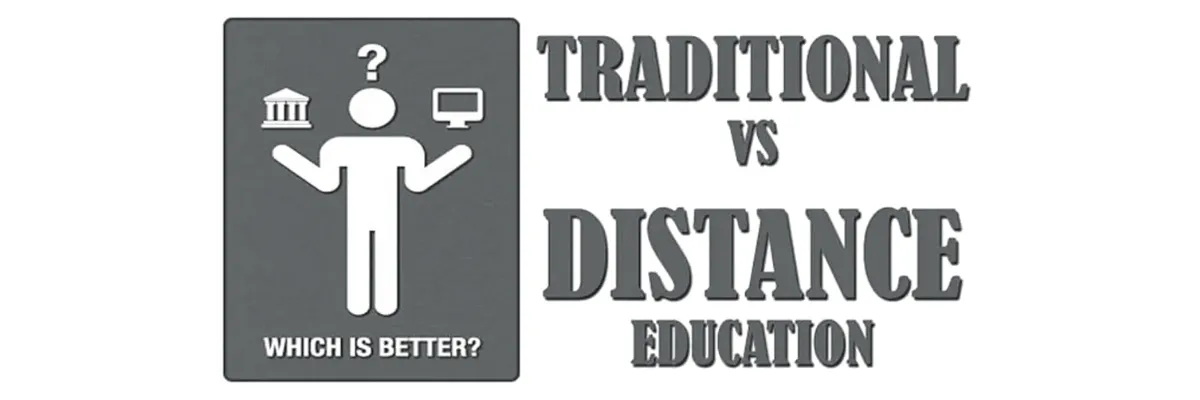Distance vs Traditional Education: What You Need to Know
With the onslaught of the current COVID-19 pandemic, the very essence of education has completely transformed. We witnessed a massive surge in the conversation surrounding the efficiency, quality, and essentially, the fabric of education and the methods of imparting this education. People began questioning the traditional method of conventional teaching and learning, comparing it to the expanding horizons of distance education and online learning. Let us delve into the pros and cons of both:
Traditional Education-Advantages and Disadvantages:
• Efficiency and Structure: Conventional education has been the prime method of imparting knowledge since centuries. It is built on the foundation of utmost efficiency and planning. There is a definite structure and schedule that shapes the children’s learning, with timelines, deadlines, and short-term goals. This ensures a consistent level of motivation and helps them in time management and compartmentalizing.
• Personal Real-Time Interaction: In offline learning, restricting the process of teaching-learning to the classroom is a major booster in terms of concentration, information synthesis, and human connection. It makes for a richer discourse.
• Location and Time: However in conventional education, there is the hinderance of location and time. For a university course, the student must be in the same geographical location as the institution, thus limiting the college and course options to choose from. Additionally, there is less freedom for the student to complete the course in his own time.
• Financial Expenses: University courses are more expensive as the student is bearing the expense of the tuition as well as the living accommodations and day-to-day finances.
Distance Education-Advantages and Disadvantages:
• Flexible Structure: In virtual learning, there is more of a flexibility in the structure of the teaching-learning process as the student has more scope to scour diverse information and experiment with knowledge that might not be considered conventionally sought-after. It gives them the freedom to harness their true potential away from the pressures, schedules, and excessive demands of quantitative grades.
• Lack of Real-Time Interaction: In online learning, one gaping hole that educators and students worldwide are experiencing is the lack of a personal connection. The hands-on exchange of knowledge and effective instruction that is offered by traditional offline learning cannot be replicated through online platforms. The impersonal and alienating touch that creeps in when one is learning through online modes cannot be avoided.
• Location and Time: Distance education is more flexible in terms of the time requirements; the students can finish the course on their own time, at their own pace and convenience. Additionally, online education offers students the opportunity to tap into resources from all across the world, offering a wider range of academic opportunities.
• Financial Aspects: Online courses are known to be less expensive in comparison to offline university programs. Distance learning enables us to sit right in our homes and learn content from any and every corner of the world, thus becoming more convenient in cases of financial challenges.
Thus, as we can see, there are advantages and disadvantages to both distance education as well as traditional education. Each comes with its own set of pros and cons, and it is up to the student and the educator to make the most out of the method of education. Irrespective of the medium, a stimulating curriculum would be effective only with an immersive and dedicated educator and responsive and eager-to-learn students. The core essence of education is still the same; a rich, freeing exchange of ideas, knowledge, and information intended to enrich the minds of students all over the world.
Need further help with planning your higher studies abroad? Contact us now!







